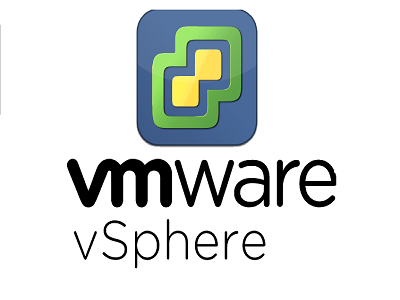VMware vSphere 7.0 with ESXi and vCenter

Training Date
April 22, 2024
May 27, 2024
June 24, 2024
July 29, 2024
August 26, 2024
September 2, 2024
October 28, 2024
December 2, 2024
Training Time
9:00 am
9:00 am
9:00 am
9:00 am
9:00 am
9:00 am
9:00 am
9:00 am
Training Location/Time Zone
Virtual Live
Course Description
This 5-day class is an intensive introduction to VMware vSphere™ including VMware ESXi™ 7 and vCenter™ 7. This course has been completely updated to reflect the most recent changes introduced in vSphere 7.
Assuming no prior virtualization experience, this class starts with the basics and rapidly progresses to advanced topics. With 45+% of class time is devoted to labs, students learn the skills they need to become effective vSphere administrators.
Students use dedicated labs that start with installation and configuration of stand-alone ESXi servers and progress to shared storage, networking and centralized management. The class continues to advanced topics including resource management, high availability, replication, performance, disaster preparedness, rapid deployment and VM cold, hot and storage migration.
This class is unique in its approach; which is to identify and eliminate common IT pain points using vSphere. Students learn how to deliver business value; not just the technical or mechanical aspects of the software.
By the end of the class, attendees will have learned the skills, and best practices of virtualization. Attendees will be able to design, implement, deploy, configure, monitor, manage and troubleshoot vSphere 7.
Program Objectives
- Introduction to VMware vSphere 7.0
- How to Install, Configure ESXi 7.0
- Introduction to Virtual and Physical Networking
- Connecting to NAS / NFS Shared Storage
- Virtual Hardware and Virtual Machines
- How to Install and Configure vCenter Server Appliance 7.0
- VM Rapid Deployment using Templates, Clones
- Working with VM Hot Plug Virtual Hardware
- The ESXi and vCenter Permission Model
- Fibre, iSCSI and NFS v4.1 Shared Storage
- VMFS – VMware’s Cluster File System
- Virtual Infrastructure Monitoring with vCenter Alarms
- Compute Resource Management with Resource Pools
- VM Cold, Hot VMotion and Storage VMotion Migration
- Load Balancing with Distributed Resource Scheduling Clusters
- Rapid VM Failure Recovery with High Availability Clusters
- Patch Management with VMware Lifecycle Manager
- Managing Scalability and Performance
- Final Thoughts
Prerequisites
Attendees should have user, operator or administrator experience on common operating systems such as Microsoft Windows®, Linux™, UNIX™, etc. Experience installing, configuring and managing operating systems, storage systems and or networks is useful but not required. We assume that all attendees have a basic familiarity with PC server hardware, disk partitioning, IP addressing, O/S installation, networking, etc.
Learning Objectives
After completing this course, you will be able to:
- Explain the many significant benefits of virtualization
- Install ESXi 7.0 according to best practices
- Use Host Client to manage standalone ESXi hosts
- Configure and manage local storage resources
- Create virtual and virtual to physical network configurations
- Define and use file share (NAS / NFS) datastores
- Create virtual machines, install operating systems and applications
- Install, configure and upgrade VMware Tools
- Install, configure and update vCenter Server Appliance
- Rapidly deployment of VMs using golden-master VM templates
- Create clones – one-time copies of virtual machine
- Use Guest OS customization to rapidly configure new VMs according to requirements
- Configure and use hotplug hardware including hot-add vCPUs and Memory
- Configure, manage, monitor and secure users and groups
- Understand the benefits and trade offs of network attached storage and Fibre, iSCSI SANs
- Configure and use shared SAN storage including Fibre SAN, iSCSI SAN
- Add and grow virtual disks including system disks and secondary volumes
- Use vCenter alarms to monitor ESXi, VM, storage and network health, performance, state
- Use Resource Pools to bulk delegate resource to meet Service Level Agreements
- Perform VM cold migrations, hot VMotion migrations and hot Storage VMotion migrations
- Configure and manage server CPU and Memory capacity and maintain VM responsiveness with Distributed Resource Schedule load balanced clusters
- Deliver high VM service availability using VMware High Availability clusters
- Use HA to successfully minimize unplanned VM down time caused by ESXi host failures, storage network failures or SAN volume failures
- Patch and update ESXi servers using vCenter Lifecycle Manager
- Monitor and tune both ESXi and virtual machine performance
- Understand how VMware and third party products, including operating systems, are impacted by virtualization
- Troubleshoot common problems
Exam Details
Language – English
Number of Questions – 70
Format – Single and Multiple Choice, Proctored
Duration – 130 Minutes
Passing Score – 300
Passing Score – VMware exams are scaled on a range from 100-500, with the determined raw cut score scaled to a value of 300. Your exam may contain unscored questions in addition to the scored questions, this is a standard testing practice. You will not know which questions are unscored, your exam results will reflect your performance on the scored questions only.
| Date | Location |
| 12-FEB-2024 — 16-FEB-2024 | Virtual Live Instructor-led (EST) |
| 19-FEB-2024 — 23-FEB-2024 | Virtual Live Instructor-led (EST) |
| 04-MAR-2024 — 08-MAR-2024 | Virtual Live Instructor-led (CST) |
| 18-MAR-2024 — 22-MAR-2024 | Virtual Live Instructor-led (CST) |
| 22-APR-2024 — 26-APR-2024 | Virtual Live Instructor-led (PST) |
| 27-MAY-2024 — 31-MAY-2024 | Virtual Live Instructor-led (CST) |
| 24-JUN-2024 — 28-JUN-2024 | Virtual Live Instructor-led (PST) |
| 29-JUL-2024 — 02-AUG-2024 | Virtual Live Instructor-led (PST) |
| 26-AUG-2024 — 30-AUG-2024 | Virtual Live Instructor-led (EST) |
| 02-SEP-2024 — 06-SEP-2024 | Virtual Live Instructor-led (CST) |
| 28-OCT-2024 — 01-NOV-2024 | Virtual Live Instructor-led (EST) |
| 02-DEC-2024 — 06-DEC-2024 | Virtual Live Instructor-led (PST) |
